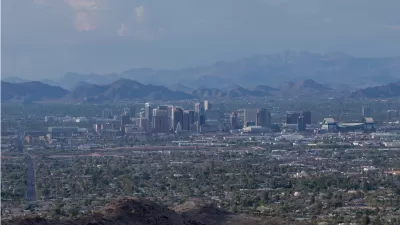Environmental reporting has been one of the major casualties as newspapers downsize, particularly in places where the in-depth coverage is most needed.

Charles Bethea writes about impacts that cuts in newspaper staff are having on environmental reporting, particularly in parts of the country where coal mining is still prevalent.
In Louisville, Kentucky, the Courier-Journal was a nationally recognized paper with 300 employees when Gannett Publications bought it in 1986, but today it has a staff of just 60. James Bruggers, the Courier-Journal’s longtime environmental reporter left last year, and he has not been replaced.
Environmental advocates and journalists say the loss of a full-time beat reporter means that a host of important topics — including the impacts of mining on the environment and workers’ health, air and water quality, logging, and global warming — are not being covered in depth. While general assignment reporters at other papers are picking up some of the slack, they are not able to devote the time and resources needed to stay on top of these stories.
In addition, says Bethea, a shift away from local papers to national coverage is less than ideal. The Courier-Journal was on the radar of other news outlets as well as local and state officials, and Bruggers' coverage led to regulatory and policy changes. But now a lack of bureaus in most parts of Kentucky means that the poorest and most vulnerable communities in the state and those hardest hit by environmental issues are largely overlooked.
FULL STORY: Shrinking Newspapers and the Costs of Environmental Reporting in Coal Country

Alabama: Trump Terminates Settlements for Black Communities Harmed By Raw Sewage
Trump deemed the landmark civil rights agreement “illegal DEI and environmental justice policy.”

Study: Maui’s Plan to Convert Vacation Rentals to Long-Term Housing Could Cause Nearly $1 Billion Economic Loss
The plan would reduce visitor accommodation by 25% resulting in 1,900 jobs lost.

Planetizen Federal Action Tracker
A weekly monitor of how Trump’s orders and actions are impacting planners and planning in America.

Waymo Gets Permission to Map SF’s Market Street
If allowed to operate on the traffic-restricted street, Waymo’s autonomous taxis would have a leg up over ride-hailing competitors — and counter the city’s efforts to grow bike and pedestrian on the thoroughfare.

Parklet Symposium Highlights the Success of Shared Spaces
Parklets got a boost during the Covid-19 pandemic, when the concept was translated to outdoor dining programs that offered restaurants a lifeline during the shutdown.

Federal Homelessness Agency Places Entire Staff on Leave
The U.S. Interagency Council on Homelessness is the only federal agency dedicated to preventing and ending homelessness.
Urban Design for Planners 1: Software Tools
This six-course series explores essential urban design concepts using open source software and equips planners with the tools they need to participate fully in the urban design process.
Planning for Universal Design
Learn the tools for implementing Universal Design in planning regulations.
Caltrans
Smith Gee Studio
Institute for Housing and Urban Development Studies (IHS)
City of Grandview
Harvard GSD Executive Education
Toledo-Lucas County Plan Commissions
Salt Lake City
NYU Wagner Graduate School of Public Service





























